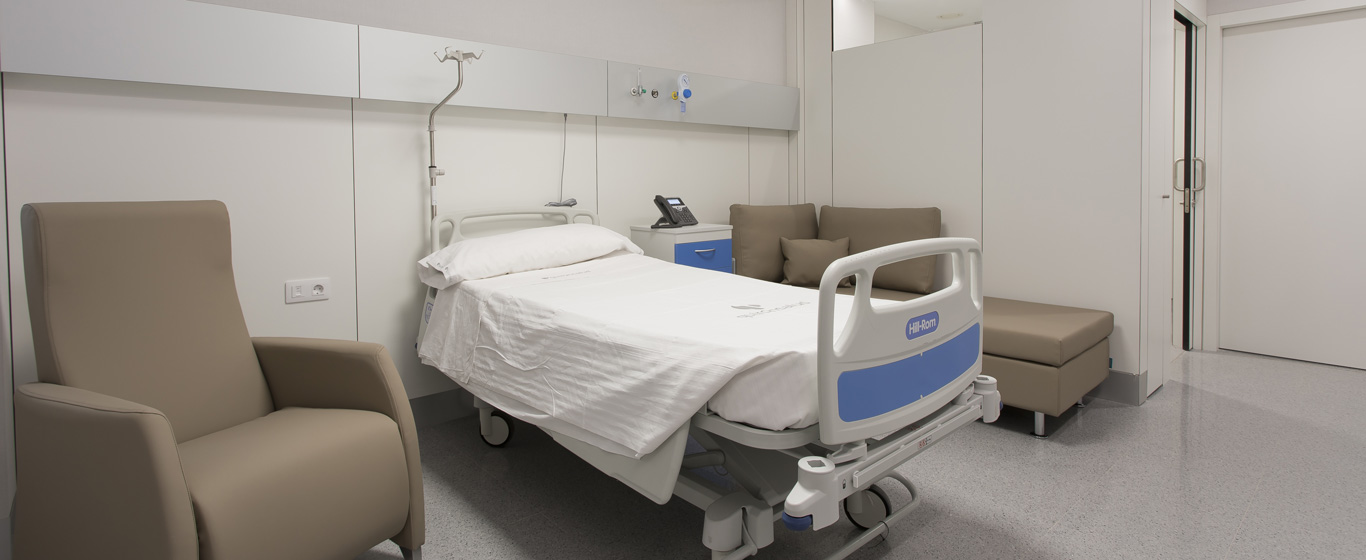Vertigo
What is vertigo? All the information about its causes and the most effective treatments for this symptom.
Symptoms and Causes
Vertigo is characterized by an illusory sensation of movement while at rest, often perceived as swaying or spinning of everything around the patient. Unlike dizziness, vertigo is caused by a disturbance in the vestibular system, located in the inner ear with its neurological center in the brain.
Depending on the origin, there are two different types of vertigo:
- Peripheral vertigo: This is the most common. It occurs when the labyrinth, the name for the semicircular canals in the inner ear, or the vestibular nerve, which transmits balance signals to the brain, are affected.
- Central vertigo: This is due to a lesion in the central nervous system that affects the balance centers.
Peripheral vertigo usually responds well to treatments and resolves in a short period, although it may recur at different points in life. However, central vertigo typically has mild symptoms and develops chronically.
Often, vertigo is confused with Meniere’s syndrome, although vertigo is actually one of the consequences of Meniere’s disease, not the same condition.
Symptoms
The main symptoms of vertigo are:
- Sensation of spinning or swaying of objects.
- Instability.
- Nausea.
- Inability to perform simple tasks.
Additionally, each type presents other specific characteristics:
- Peripheral vertigo:
- Pressure and pain in the ear.
- Tinnitus.
- Hearing loss.
- Central vertigo:
- Altered gait.
- Double vision.
- Headaches.
Causes
Peripheral vertigo can be caused by several factors, including:
- Benign paroxysmal positional vertigo (BPPV): Small pieces of calcium (canaliths) break off and float in the fluid of the inner ear, confusing the brain about the position of the body.
- Meniere’s disease: There is an infection or narrowing of the blood vessels supplying the ear.
- Certain medications: Diuretics or aminoglycoside antibiotics.
- Vestibular neuritis: Inflammation of the vestibular nerve.
- Labyrinthitis: Inflammation of the semicircular canals in the inner ear.
- Benign tumors on the vestibular nerve (vestibular schwannoma).
The causes of central vertigo are:
- Wallenberg syndrome: Blockage of the posterior cerebellar artery.
- Multiple sclerosis: Damages the nerve cells in the ear irreversibly.
- Stroke: Reduces blood flow to the ear.
- Medications like anticonvulsants or aspirin.
- Brain tumors.
- Epilepsy.
Risk Factors
Vertigo can affect people of all ages, from children to adults. However, certain characteristics increase the risk of developing this condition, such as:
- Age: More common in those over 60.
- Hypertension.
- Diabetes.
- Alcohol consumption.
Complications
Vertigo interferes with the daily activities of patients, as it can be disabling and prevent tasks like driving or working. It can also cause falls leading to more serious problems, such as bone fractures or severe injuries.
Prevention
Although some types of vertigo cannot be prevented, the best way to avoid it is to minimize ear infections as much as possible. To do this, it is recommended to:
- Clean the ears properly to avoid earwax blockages.
- Avoid cold and drafts.
- Keep the ears dry.
- Maintain a healthy diet.
- Avoid exposure to loud noises.
What Doctor Treats the Vertigo?
Otolaryngologists are the specialists who diagnose and treat vertigo. Specifically, otologists and neuro-otologists are subspecialists in this field. Additionally, it can be detected during a routine check-up in the medical check-up unit or treated with alternative medicine.
Diagnosis
To diagnose vertigo, specialists focus on the patient’s history and reported symptoms, which are usually decisive. To confirm the diagnosis and determine the type, other tests may be performed, such as:
- Otorhinolaryngological examination: This involves examining the ears, mouth, nasal cavities, and throat.
- Otomicroscopy: Examination of the ears with a microscope.
- Fundus eye exam and ocular motility study: As an alternative to studying the vestibular system, which cannot be studied in isolation.
- Audiometry: Study of auditory function.
- Neurological examination: Involves assessing gait, dysmetria (difference in limb length), or dysdiadochokinesia (inability to perform alternating movements rapidly).
- Complete computerized vestibular test: Evaluates the function of the vestibule and semicircular canals.
- MRI of the ear and brain: Provides clear images of both organs, helping detect abnormalities or tumors.
- Cardiology study.
Treatment
The treatments for vertigo are based on curing the cause that triggers it, so they can vary greatly. For benign paroxysmal positional vertigo, performing otolith repositioning maneuvers is usually enough for a cure. In other cases, conservative approaches have not proven generally effective, though they are still recommended in certain situations. These include:
- Dietary modifications: Often, a low-salt, low-fluid diet improves cases caused by Meniere’s disease.
- Medications: Diuretics, which reduce the amount of fluid in the ear, or those that improve blood circulation in the ear, such as betahistine.
When these approaches don’t work, other therapies are considered:
- Intratympanic gentamicin: This antibiotic is injected directly into the eardrum and reaches the inner ear cells. This therapy has been very effective.
- Surgery: Ear operations are only performed to treat vertigo when none of the more conservative approaches have had the desired effect.
- Vestibular neurectomy: The vestibular nerve, responsible for balance, is cut to eliminate symptoms without affecting hearing.
- Labyrinthectomy: The sensory receptors in the ear are removed, resulting in hearing loss, and is only recommended when the patient already has significant hearing difficulty.







































































































